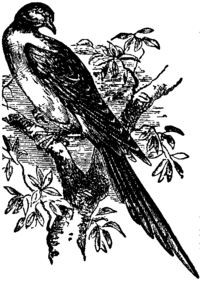Pied'mont, the northwest of Italy, comprising the modern provinces of Turin, Alessandria, Cuneo and Novara. Area, 11,336 square miles; population 3,423,854. Much of its land is reclaimed by irrigation and made highly productive. The system of irrigation is well-nigh perfect. It is watered by the upper Po. The country is rich in Waldensian memories.
Piedmont Region, The, is a part of the Atlantic coastal plain of the United States, lying further inland than the low and level area nearest the ocean, but continuous with it. There is a real geographical difference between the Piedmont region and the coastal plain proper, for the former is higher, more rugged and geologically older and based upon harder strata of rock. There is a falls' line between the Piedmont region and the coastal plain proper, where most of the coastal rivers, in leaving the harder for the softer strata of rock, have worn a series of rapids and precipitous falls. The Piedmont region in the south is from two to three hundred miles broad; but in the north, especially in New York, very narrow.

|
| FRANKLIN PIERCE |
Pierce, Franklin, fourteenth president of the United States, was born in New Hampshire, Nov. 23, 1804. He early came into political prominence in his native state. In 1837 he was elected to the United States senate, of which he was the youngest member. In 1842 he resigned his seat. He was a Democrat of the Jacksonian school and a zealous advocate for the admission of Texas, with or without slavery. He volunteered as a private in the Mexican War, but President Polk made him a brigadier-general. In 1852 he received the Democratic nomination for the presidency and obtained the electoral votes of all the states, save Vermont, Massachusetts, Tennessee and Kentucky. During his administration the Missouri Compromise was repealed by the passage of the Kansas-Nebraska bill. At the close of his administration he spent three years in Europe; returned home to Concord; but took no part in politics. He died at Concord, N. H., Oct. 8, 1869.
Piero dei Franchesi. See Francesca, Piero della.
Pierre, So. Dak., the capital of the state and county-seat of Hughes County, is situated near the site of old Port Pierre, about the center of South Dakota. The fort was founded in 1829, and was named after one of its early fur traders. It has good public schools, Pierre University (Presbyterian) and a governmental, Indian industrial school. Pierre is on the Missouri River and has the service of the Chicago and Northwestern Railroad. Population 3,656.
Pierre'pont, Edwards, American lawyer and diplomat, was born at New Haven, Conn., in 1817; and died at New York, March 6, 1892. As attorney-general of the United States he conducted the trial of Surratt, an accomplice in the murder of President Lincoln. In 1876-8 he was minister to England. As a jurist he had a wide reputation, and European governments were influenced by his writings upon international law.
Pig. See Swine.

|
| PASSENGER-PIGEON |
Pigeon (pĭ′jŭn), a name for members of the dove family. There are about 300 species all over the world, being most abundant in the East Indies. Only two are found in the Eastern United States — the wild pigeon and the turtledove. The wild or passenger-pigeon is exceedingly rare. It formerly was very abundant, perching in the forests in such numbers as to break limbs of trees and covering a large territory in their daily flight in search of food. During migration they flew in such large flocks that it would sometimes require days for them to pass a particular point. They were nearly exterminated by wholesale slaughter. The bird is about 17 inches long, with large wings and a long, pointed tail. The male is bluish above, purple brownish-red below, more violet behind, with a black bill and yellow feet. It depended largely upon acorns and beechnuts for food, with occasional feasts on grain and berries. The turtle or mourning dove still is quite common. The long, soft, mournful note of the male during the nesting season is known to nearly everyone in the United States. It is a smaller bird than the passenger pigeon, being about 11¾ inches long. The upper parts are olive grayish brown, the neck iridescent, the breast pinkish and the belly buff; the outer tail-feathers are tipped with white. They nest in isolated pairs, and two broods are produced a year. There is a large number of domestic pigeons, all descended from a wild form generally be-
